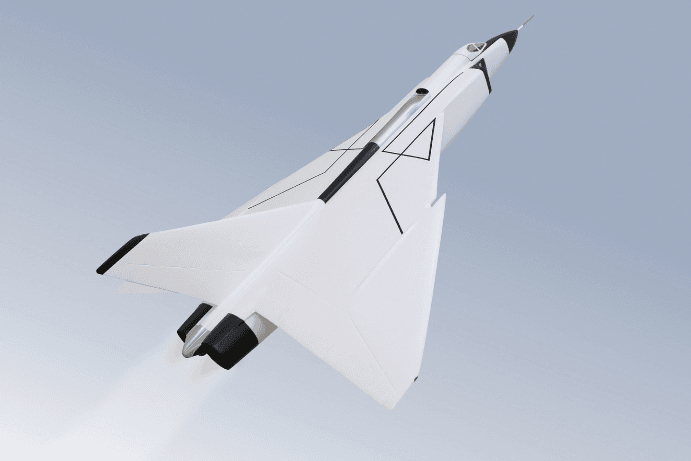One more in this week, the supersonic aircraft. Early this week the US aerospace and now joins the Chinese aerospace industry in the headlines with their supersonic aircraft. China’s aerospace industry has made significant waves in the development of a superfast turbojet engine.
China has already brought fumes into the next-gen technology space. The launch of the DeepSeek R1 AI model soared about trillions of dollars in the global markets. And now joins China’s superfast turbojet which adds more heat to the already torn wound. In the race for new-generation military capabilities, China brings an unnamed turbine engine with advanced artificial intelligence technology. This advanced AI-embedded technology enables the superfast aircraft to operate efficiently and stably at speeds of up to Mach 4.
The Engine Design
The latest Chinese turbojet engine adopts a dual-mode design. It uses Chinese-made military CPUs. These CPUs can face a significant cap on computing frequency and performance due to the harsh operating environment. The superfast turbojet engine uses turbines to compress air for efficient combustion at low speeds and opens an additional air intake during high-speed cruising. This allows the air to go straight into the combustion chamber for increased thrust.
The Chinese scientists developed an enhanced “high-mach adaptive model” to boost the engine’s performance. This model enables the superfast turbojet engine to work “smartly” under nearly all operating conditions.
Integration of Artificial Intelligence
A notable feature of this engine is its integration of artificial intelligence (AI) to optimize performance. The Chinese scientists developed a unique artificial intelligence model. It enables Chinese homemade military chips to perform a large number of complex calculations in a short time.
This AI model can track and estimate engine characteristic parameters. Additionally, it performs similar functionality on health parameters online in real-time with supreme accuracy. Thus marking the value of the high engineering application.
The Engine’s Capabilities
Scientists at Taichung National Laboratory, China have achieved a significant milestone in aerospace engineering. They have successfully completed the ground test of a new turbojet engine designed to propel aircraft at speeds up to Mach 4, or four times the speed of sound. This development positions China more powerful at the forefront of high-speed aviation technology, precisely targeting the latest in the buzz America’s XB1.
Traditional jet engines struggle beyond Mach 2 due to intense heat and airflow challenges. But China’s latest engine uses advanced materials and reportedly uses adaptive cooling techniques to withstand the extreme temperatures encountered at hypersonic speeds.
This new turbojet engine meets the military requirement. And the Taichun lab sources all materials and manufactures all products entirely within China. Known for its remarkable accomplishments Taichun lab has worked on the Taihang series engines that power advanced fighter jets like the J-20. Now, for the first time, the laboratory officially confirmed the existence of high Mach military equipment reported SCMP.
In the military sphere, the engine’s capabilities could lead to the development of reconnaissance aircraft and unmanned aerial vehicles (UAVs) capable of rapid deployment and evasion.
Future Prospects
Though the latest high-speed turbojet engine is developed as per the requirement of the Chinese military, this engine could revolutionize civilian air travel too.
Imagine flying from Beijing to New York in under three hours—a journey that currently takes over 13 hours. The prospect of a new generation of supersonic or hypersonic commercial aircraft can make that happen. Logistics and global supply chains could experience a major boost, with goods transported at unprecedented speeds.
Although commercial deployment may still be years or maybe even decades away especially in China with a focus precisely on military-grade engines. The current successful test signals the beginning of a transformative era in aviation.
Challenges
Irrespective of the advancements in aerospace engineering, China lags in traditional turbojet engine technology because no civilian jet uses its own meaning China-made engine.
Despite this achievement, challenges remain, particularly in materials science and heat management, to ensure the engine’s reliability and longevity during hypersonic flight. Ongoing research and development are expected to address these issues. Further, paving the way for the engine’s integration into next-generation aircraft.
This breakthrough underscores China’s commitment to advancing aerospace technology and could have far-reaching implications for the future of air travel and military aviation.

